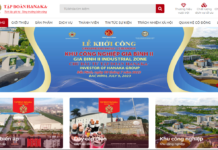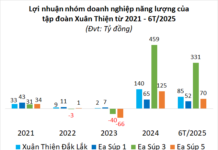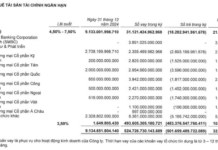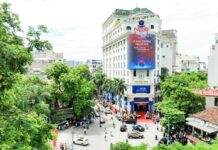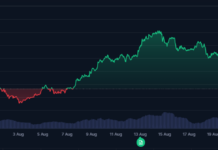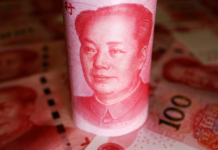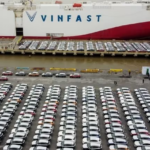This is the assessment of Mr. Suan Teck Kin, Director of Market Research and Global Economics at UOB Bank (Singapore), during the macroeconomic update session on the afternoon of September 17, 2025.
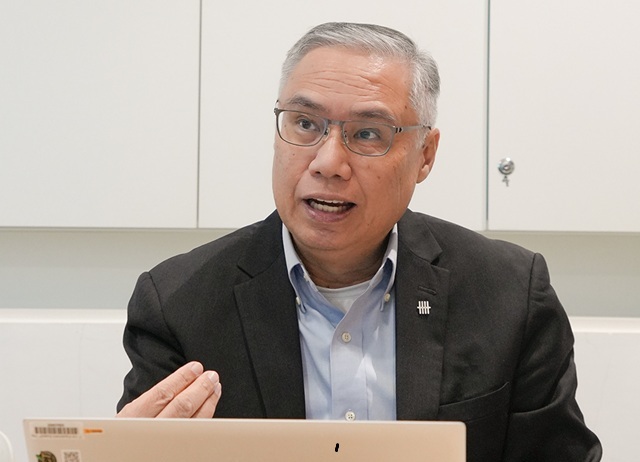
Mr. Suan Teck Kin – Director of Market Research and Global Economics at UOB Bank (Singapore)
|
Vietnam’s actual Gross Domestic Product (GDP) surged by 7.96% year-on-year in Q2/2025 (compared to the revised 7.05% in Q1/2025), surpassing Bloomberg’s forecast of 6.85% and UOB’s prediction of 6.1%. For the first six months, growth reached 7.52% year-on-year—the highest first-half growth since 2011.
The robust growth in the first half was primarily driven by a 14% year-on-year increase in export turnover, as market sentiment rebounded following President Trump’s reduction of “counterpart” tariffs to a temporary baseline of 10% for trading partners within 90 days.
Tariff uncertainty eased in the second half of 2025 after the U.S. finalized country-specific tariffs by the August 1 deadline. Vietnam’s tariff rate was set at 20%.
Although lower than the initial 46%, concerns remain. The 40% tariff on transshipment goods still lacks specific guidelines, and industry-specific tariffs—particularly for semiconductors and furniture—are pending. These sectors are critical: Electronic goods (HS 85) accounted for 31% of total U.S. imports from Vietnam in 2024, followed by machinery (HS 84; 21%) and furniture (HS 94; 10%). Tariffs on these categories could impact over 40% of Vietnam’s total exports to the U.S.
July data shows sustained growth momentum, despite tariff uncertainties. Export turnover in July rose 17% year-on-year, reaching a record $42.3 billion, pushing year-to-date growth to nearly 16%. The trade surplus for the first seven months was $9.5 billion, lower than the $14 billion recorded in the same period last year due to strong import growth from advanced export orders. Despite tariff pressures, full-year exports could still grow by around 10% (compared to 14% in 2024), assuming moderate growth of 1-5% year-on-year for the remainder of 2025.
Other indicators highlight economic resilience: The PMI index rebounded to 52.4 in July after three consecutive months below 50, and industrial output grew 9% year-on-year, despite a high base for comparison.
Realized FDI reached $13.6 billion as of July, up from $12.6 billion in the same period last year, suggesting full-year FDI could exceed $20 billion (compared to $25.4 billion in 2024).
In response to external challenges, Vietnam announced a $48 billion infrastructure investment plan in mid-August, covering 250 projects. The government will fund 129 projects, focusing on urban and transportation development with a total capital of $18 billion. The remaining 121 projects, valued at $30.5 billion, will be financed through other sources, including foreign businesses.
Despite tariff risks and uncertainties, Vietnam’s economy demonstrates resilience and dynamism. Export activity remains particularly strong, though risks persist if U.S. demand weakens due to tariff-induced price pressures. Following impressive 7.5% growth in the first half of 2025 and expected support from increased public investment, UOB revised its full-year GDP growth forecast upward to 7.5% (from the previous 6.9%; compared to 7.09% in 2024), with Q3/2025 growth projected at 7.6% year-on-year and Q4/2025 at 7.2%.
For 2026, UOB maintains its growth forecast at 7%. The government currently targets GDP growth of 8.3%-8.5% for this year.
Mr. Suan Teck Kin stated: “Between 2026 and 2045, an average annual growth rate of 7% is entirely feasible for Vietnam. This will materialize if current reform and opening policies, along with investment and trade, continue to be promoted and effectively implemented.”
To achieve Vietnam’s goal of becoming a high-income developed country by 2045, Mr. Suan Teck Kin noted that many factors must be implemented, drawing lessons from countries like Singapore, Malaysia, China, and others. The Vietnamese government has taken appropriate steps to enhance efficiency and productivity by reducing administrative procedures—such as decreasing the number of provinces—and granting greater autonomy to the private sector in the economy.
He mentioned that Resolution 68/NQ-TW was issued at the right time to recognize and support the nurturing and development of domestic enterprises, with hopes for the emergence of “leading enterprises.”
In many countries, domestic enterprises, especially small and medium-sized enterprises (SMEs), significantly contribute to GDP, employment, tax revenue, and innovation. For example, in China, SMEs account for 98.5% of all enterprises, contribute 60% of GDP, and generate 75% of employment (OECD, 2022), including jobs for women, youth, and vulnerable groups. Similarly, in Singapore, SMEs create 72% of employment and approximately 47% of GDP.
Given the importance of SMEs in the local economic ecosystem, policies supporting their formation and sustained growth are essential to propel the economy into the next development phase—alongside multinational corporations.
Additionally, Mr. Suan Teck Kin emphasized the government’s role in laying the foundation for long-term benefits through continuous infrastructure investment. This includes both hard and soft infrastructure: seaports, railways, roads, airports, electricity, water, education, healthcare, and legal frameworks. Only with a robust foundation from infrastructure improvements can the nation rise and stand firm.
– 20:40 17/09/2025
The Art of Persuasion: Crafting Compelling Copy for the Web
“The Ambassador’s Insights: Navigating Reciprocal Tariffs and Their Impact on the Seafood Industry”
The current retaliatory tax imposed by the United States on Vietnamese goods stands at a significant 20%, with an additional transit tax of 40%.
“Provincial Party Secretary of Tay Ninh Delivers Committing Speech at a Significant Conference”
With a thriving business landscape, Tay Ninh province boasts over 37,000 enterprises with a total registered capital of an impressive 912 trillion VND. In addition, the province is home to more than 3,000 domestic projects and nearly 1,900 FDI projects, showcasing its attractiveness to both local and foreign investors.
The Ultimate Capital Magnet: Unveiling Vietnam’s Top FDI Destination of 2025
As of August 31, 2025, foreign investment in Vietnam has reached impressive new heights. The latest figures from the Foreign Investment Agency under the Ministry of Finance reveal a total registered foreign investment of 26.14 billion USD. This encompasses new registrations, adjusted capital investments, and the value of capital contributions and share purchases by foreign investors. This significant figure marks a notable 27.3% increase compared to the same period last year, showcasing Vietnam’s growing appeal as a global investment destination.











